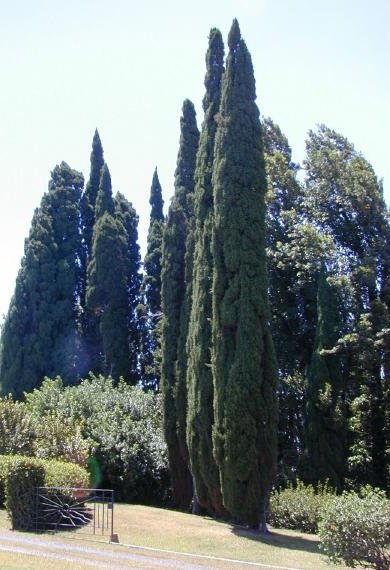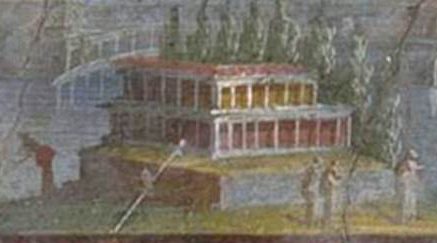
Also known as Tuscan cypress, Persian cypress, Mediterranean cypress, and pencil pine, this evergreen coniferous tree is native to rocky mountain sites of the eastern Mediterranean region including parts of North Africa, Europe, and the Middle East. It is in the cypress family, Cupressaceae that also includes redwoods and junipers. Because it does not regenerate easily if cut back hard, Italian cypress has long been associated with mourning and death and is frequently found associated with graveyards. According to the ancient Roman poet, Ovid, (died 18 AD) the association of the cypress with mourning and sorrow is linked to a handsome boy named Cyparissus who was beloved by Apollo. When Cyparissus accidently killed his tame stag his grief was so great that he wanted to weep forever and Apollo transformed the boy into the cypress tree with the tree’s sap as his tears. A wall painting found at VIII.7.28 (site of the Temple of Isis) in the city of ancient Pompeii, now in the Naples museum, shows a small island on which there is a building enclosed at the back by a row of cypress trees. The ancient Roman naturalist, Pliny the Elder (died 79 AD) notes that there are two forms: one columnar, the other more horizontal. Photo Credit Wikipedia

The trees can grow up to 115′ feet tall but usually are 40-60′. The dark gray-green leaves are scale-like and grow on rounded shoots. The foliage is aromatic when crushed and grows in dense sprays. Male and female cones are on the same tree. The ovoid to oblong female cones are less than 1.5″ across and are green ripening to brown 20-24 months after pollination. The trees are very long-lived, the oldest being a specimen in Iran that is about 4,000 years old. Italian cypress has been cultivated as an ornamental since ancient times and is a popular tree in suitable climates of western US especially Southern California.
Size: 40-115′ H x 10-20′ W
Light: Full sun
Soil: Average, medium moist, well-drained but tolerates some drought
Hardiness: Zones 7-10